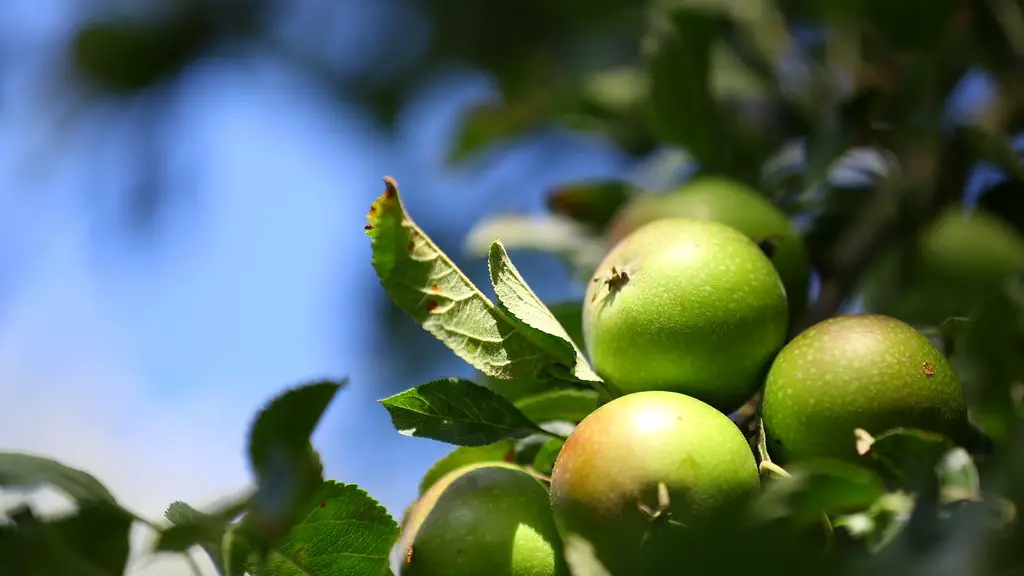To ensure good growth and fruiting, it is important that the amount of water given to a lemon tree is appropriate. How much and how often to water a lemon tree will depend on a few factors. Firstly, it is essential to take into account the location of the tree and its environment. Weather conditions and soil fertility also matter. Secondly, determining whether the tree is a young tree or a more mature one is also important. If it is a newly grown tree, it should be watered more frequently than mature trees.
Another factor to consider when watering a lemon tree is the pot size in which it lives. Smaller pots will require more frequent watering, while bigger pots will need to be watered less often. Additionally, the lifespan of the tree should also be taken into account. For example, a one-year-old lemon tree will need to be watered more regularly than an older tree that has been in place for several years.
Ideally, lemon trees should be watered deeply two to three times a week during the growing season, every three to four weeks in the winter. To ensure a healthy tree, the soil should be checked consistently to determine moisture levels. If needed, a water meter should be used to help gauge the soil’s moisture content. That way, the amount of water can be adjusted according to the season.
It is important to remember that the amount of water given to the tree must never be so little as to cause the tree to suffer from water stress, or so much as to cause its roots to rot due to too much water. It is also important to note that although lemon trees thrive in well-drained soil, they can experience root rot from excessive water if it isn’t draining correctly.
Additional Considerations
When considering how much to water a lemon tree, the type of mulch being used also needs to be taken into account. Mulching helps to prevent water loss and helps to keep the soil moist. It can also help to prevent any pollutants from entering the soil, which can be harmful to the lemon tree. It is necessary to choose the appropriate type of mulch for a lemon tree to ensure adequate water absorption and prevent any water loss.
Furthermore, it is essential to maintain adequate air circulation around the lemon tree. The air should be able to move freely around the tree and should be humid. This will help to keep the tree healthy and keep it from becoming stressed due to excessive water. Lastly, it is important to check the Lemon tree’s leaves for signs of disease or pests. This will allow for early detection and swift action to prevent any long-term damage.
Recommended Watering Schedule
When determining how much to water a lemon tree, the recommended schedule is to water each week during the growing season and every three to four weeks during the winter period. To ensure the tree grows healthily, it is important to check the soil moisture regularly and adjust the amount of water being given if necessary.
When watering the tree, it is important to avoid watering the tree too quickly. When watering, it is best to use a watering can with a long spout or a sprinkler. This ensures the water is applied slowly and that the soil has a chance to absorb it. Additionally, the tree should be watered from the base of the tree and avoid water reaching the leaves. That way, the tree is not at risk of disease or pest infestation.
Fertilizing and Pruning Techniques
In addition to watering, it is important to fertilize and prune a lemon tree correctly. The tree should be fertilized with a balanced fertilizer that is intended for citrus trees, as well as pruning being done regularly. Pruning helps to ensure the tree remains healthy and allows sunlight to reach the tree, which is essential for healthy growth. This can be done by removing any dead or diseased branches or foliage.
The lemon tree should also be pruned to maintain a balanced shape and remove any crossing branches. Additionally, pruning helps to improve the overall canopy of the tree which helps to improve air circulation and enable the tree to take in the sun. That way, the tree is able to develop its fruits and thrive.
Tree Maintenance Techniques
In addition to adequate watering and pruning techniques, it is important to ensure proper tree maintenance techniques as well. The tree should be monitored for disease and pests, and if any are detected, they should be immediately addressed and treated. Additionally, it is important to check the pH of the soil and adjust it if necessary to ensure proper growth and fruit production.
It is also important to regularly check the tree’s canopy to ensure it has the right balance of foliage and branches and that the canopy provides sufficient sunlight for the tree. This will ensure the tree has the right amount of light to produce fruit. If the canopy is too dense, then it can be pruned and thinned out to allow for plenty of light.
Finally, it is important to regularly check the soil’s temperature to ensure the roots of the tree are warm enough. If the temperature of the soil is too low, this can cause water to become too cold, resulting in damage to the tree’s roots. This can be avoided by either using a heating mat to warm the soil or ensuring the tree is in a warm and sunny position.
Frost Protection
As lemon trees require warm temperatures to thrive, they are vulnerable to frost. To prevent any damage to the tree, it is best to cover it with a frost cover or move it to a sheltered spot if there is a risk of frost. Additionally, it is important to check the temperature of the soil to ensure it is not too cold.
In addition to frost protection, it is important to check the drainage of the area that the lemon tree is planted in. If the tree is planted in an area with poor drainage, then its roots are at risk of sitting in water which can cause root rot. If this is the case, then it is important to take steps to improve the drainage of the area.
Finally, it is important to regularly monitor the health of the tree and diagnose any potential diseases or pests that may be affecting it. If any issues are detected, then it is important to take steps to address the issue. That way, the tree is able to grow and produce fruits healthily.



